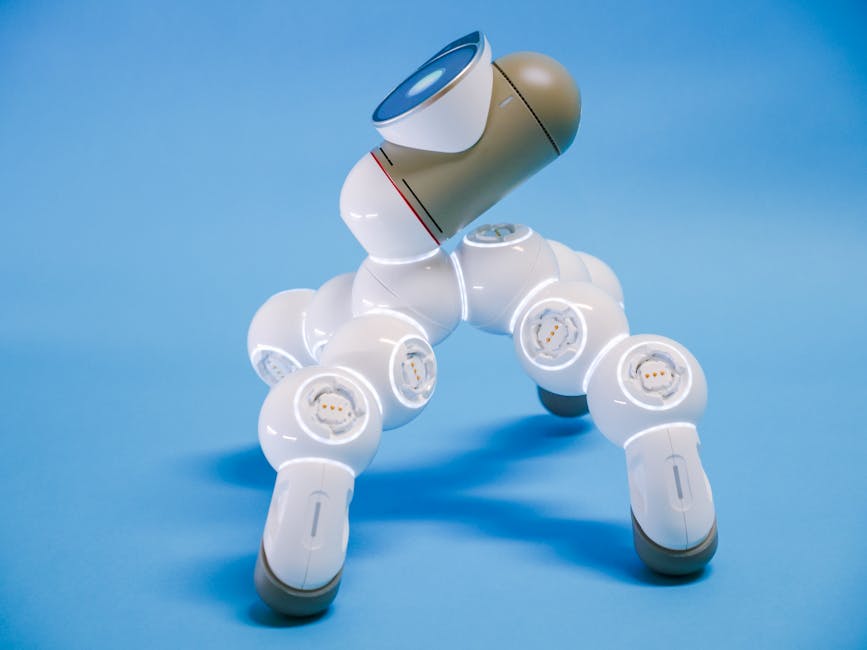Product development and UX are undergoing a transformative era in 2025, redefining how businesses innovate and how users interact with digital products. At InnExo, where next-level innovation starts, understanding the synergy between product development and user experience is crucial to staying ahead of the curve. In this comprehensive guide, we explore the latest trends, strategies, and principles shaping the future of product development and UX, helping you craft experiences that truly resonate with users and drive sustainable success.
The Evolution of Product Development & UX in 2025

The landscape of product development and UX has shifted dramatically in recent years, driven by rapid technological advancements, changing user expectations, and a renewed focus on value-driven outcomes. In 2025, the integration of artificial intelligence, automation, and ethical design principles is no longer optional—it’s essential for delivering products that stand out in a crowded digital marketplace.
One of the most significant changes is the role of the designer and product developer. No longer confined to the boundaries of aesthetics or functionality, today’s professionals are strategic thinkers, business advocates, and champions of user-centric innovation. The collaborative nature of product teams has expanded, with designers, developers, data scientists, and stakeholders working together to align business objectives with user needs.
Moreover, the influence of AI and automation is reshaping workflows. Algorithms and smart tools assist in everything from ideation to prototyping, enabling faster iterations and more personalized user experiences. However, human creativity and critical thinking remain at the core, guiding high-level decisions and curating AI-generated solutions to fit unique project goals.
As organizations embrace digital transformation, the boundaries between physical and digital products blur. Immersive technologies like AR, VR, and 3D modeling are becoming mainstream, offering new avenues for engagement and storytelling. At the same time, accessibility, inclusivity, and sustainability are no longer afterthoughts—they are integral to the product development lifecycle, ensuring that innovation benefits everyone.
Integrating AI and Automation for Smarter Product Experiences

Photo by Kindel Media on Pexels
Artificial intelligence has become a cornerstone of modern product development and UX, enabling teams to deliver smarter, more adaptive experiences. In 2025, AI is not just about automation; it’s about meaningful personalization, predictive insights, and ethical data use.
AI-driven design tools streamline workflows, from generating design variations to automating repetitive tasks. This allows designers and developers to focus on creative problem-solving and strategic decision-making. Machine learning algorithms analyze user behavior, preferences, and feedback, empowering teams to create products that evolve alongside their users.
Personalization is a key benefit of AI integration. Products can dynamically adapt to individual user journeys, offering relevant content, recommendations, and features. For example, AI-powered onboarding flows can guide users based on their goals and skill levels, increasing engagement and retention.
However, with great power comes great responsibility. Ethical considerations are paramount when leveraging AI in product development. Addressing algorithmic bias, ensuring data privacy, and maintaining transparency are essential to building trust with users. Teams must adopt ethical frameworks and conduct regular audits to ensure their AI systems are fair, inclusive, and aligned with user values.
Ultimately, the successful integration of AI and automation hinges on a balanced approach—leveraging technology to enhance efficiency and personalization while preserving the human touch that makes products truly memorable.
Prioritizing Accessibility and Inclusive Design

Photo by Kampus Production on Pexels
Accessibility and inclusive design are at the forefront of product development and UX in 2025. As digital products become ubiquitous, ensuring that everyone can access and benefit from innovation is both a moral imperative and a business advantage.
Inclusive design goes beyond compliance with accessibility standards. It involves understanding the diverse needs, abilities, and contexts of users, and proactively designing solutions that remove barriers. This means considering factors like visual, auditory, cognitive, and motor impairments, as well as cultural and linguistic diversity.
Leading organizations are embedding accessibility into every stage of the product lifecycle, from research and ideation to testing and deployment. User research is expanding to include people with disabilities and underrepresented groups, providing valuable insights that inform more empathetic design decisions.
Technologies such as voice interfaces, real-time captioning, and adaptive user interfaces are making products more accessible than ever. Automated accessibility testing tools are helping teams identify and address issues early, reducing the risk of exclusion and legal challenges.
Beyond compliance, inclusive design fosters innovation by challenging assumptions and encouraging creative solutions. Products that are accessible by design often deliver superior experiences for all users, not just those with specific needs. Embracing inclusivity signals a commitment to social responsibility, enhancing brand reputation and expanding market reach.
Sustainable and Ethical Product Development

Photo by Photo By: Kaboompics.com on Pexels
Sustainability and ethics are shaping the future of product development and UX, reflecting the growing awareness of environmental and social impact. In 2025, businesses and designers are re-evaluating their practices to minimize harm and maximize positive contributions to society.
Digital products, while intangible, have real-world consequences. High energy consumption, electronic waste, and data storage all contribute to the environmental footprint of technology. Sustainable design principles encourage teams to optimize performance, reduce resource use, and prioritize longevity over disposability.
Ethical product development extends to data privacy, user consent, and transparency. Users are increasingly concerned about how their information is collected, stored, and used. Clear communication, robust security measures, and user-friendly privacy controls are essential for building trust and loyalty.
Designers and product teams are also addressing issues like dark patterns, algorithmic bias, and digital addiction. By adopting ethical guidelines and engaging in continuous reflection, organizations can avoid unintended consequences and create products that empower rather than exploit users.
Sustainability and ethics are not just checkboxes—they are opportunities for differentiation and long-term success. Companies that lead with purpose and integrity are better positioned to attract talent, customers, and partners who share their values.
Future-Proofing Your Product Development & UX Strategy

Photo by Michelangelo Buonarroti on Pexels
Staying ahead in the rapidly evolving world of product development and UX requires a proactive, adaptable strategy. In 2025, future-proofing your approach means embracing change, investing in continuous learning, and fostering a culture of experimentation.
Cross-functional collaboration is key to innovation. Breaking down silos between design, development, marketing, and business teams enables holistic problem-solving and faster iteration. Agile methodologies and design thinking frameworks support rapid prototyping, user testing, and iterative improvement.
Continuous user research is essential for staying attuned to shifting needs and expectations. Leveraging analytics, feedback loops, and co-creation sessions with users ensures that products remain relevant and valuable over time.
Investing in professional development and upskilling is critical as new tools, technologies, and methodologies emerge. Encouraging curiosity, resilience, and open-mindedness within teams fosters a culture where innovation thrives.
Finally, future-proofing means anticipating trends and disruptions—from emerging technologies like spatial computing to evolving regulations around privacy and accessibility. By staying informed and agile, organizations can turn challenges into opportunities and lead the way in delivering next-level experiences.
Sources
- https://trends.uxdesign.cc
- https://www.nngroup.com/articles/ux-reset-2025/
- https://www.uxdesigninstitute.com/blog/ux-design-trends-in-2025/
- https://www.behance.net/gallery/209674381/Design-Trends-2025?locale=en_US
- https://careerfoundry.com/en/blog/product-design/product-design-trends/





